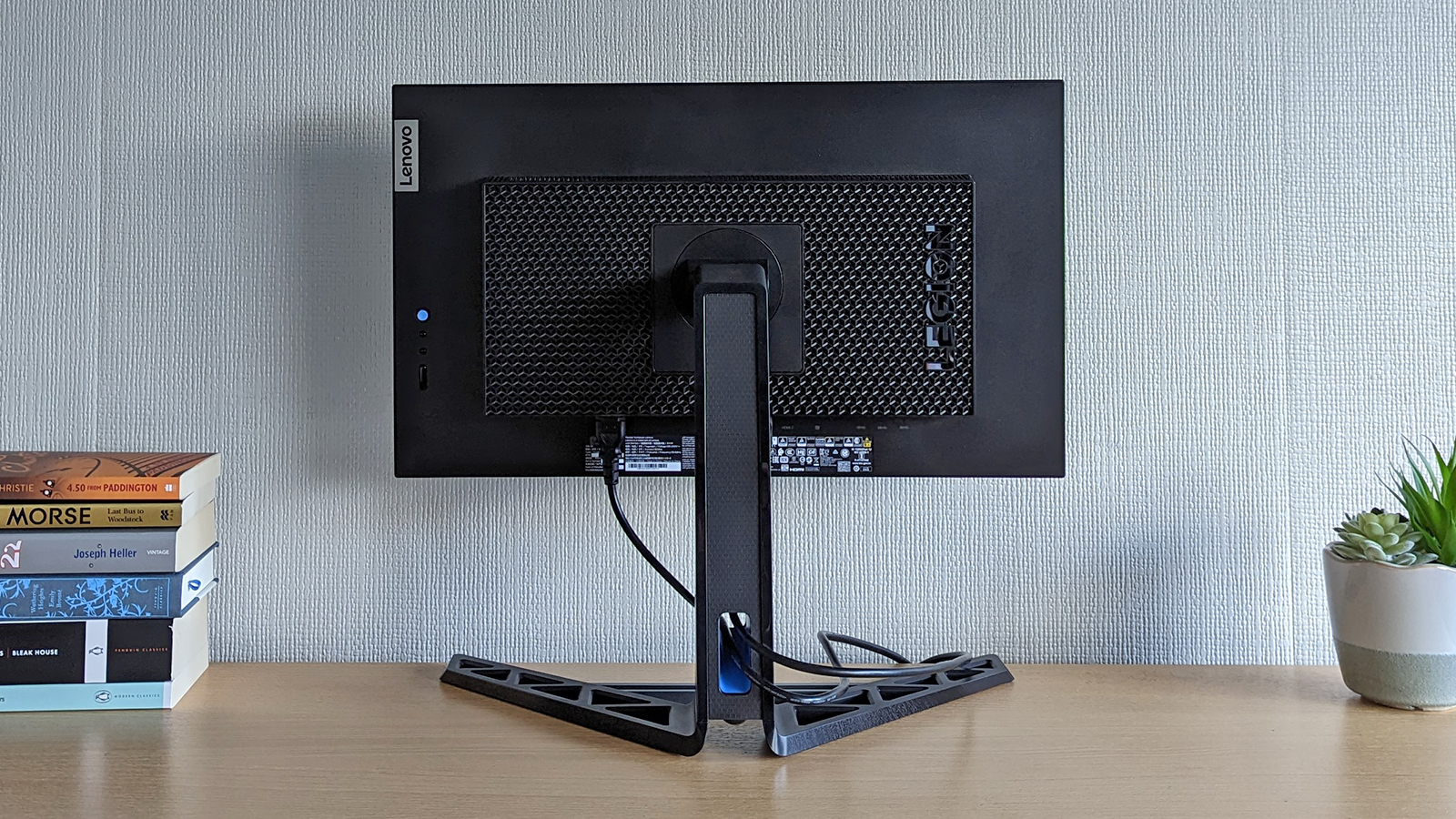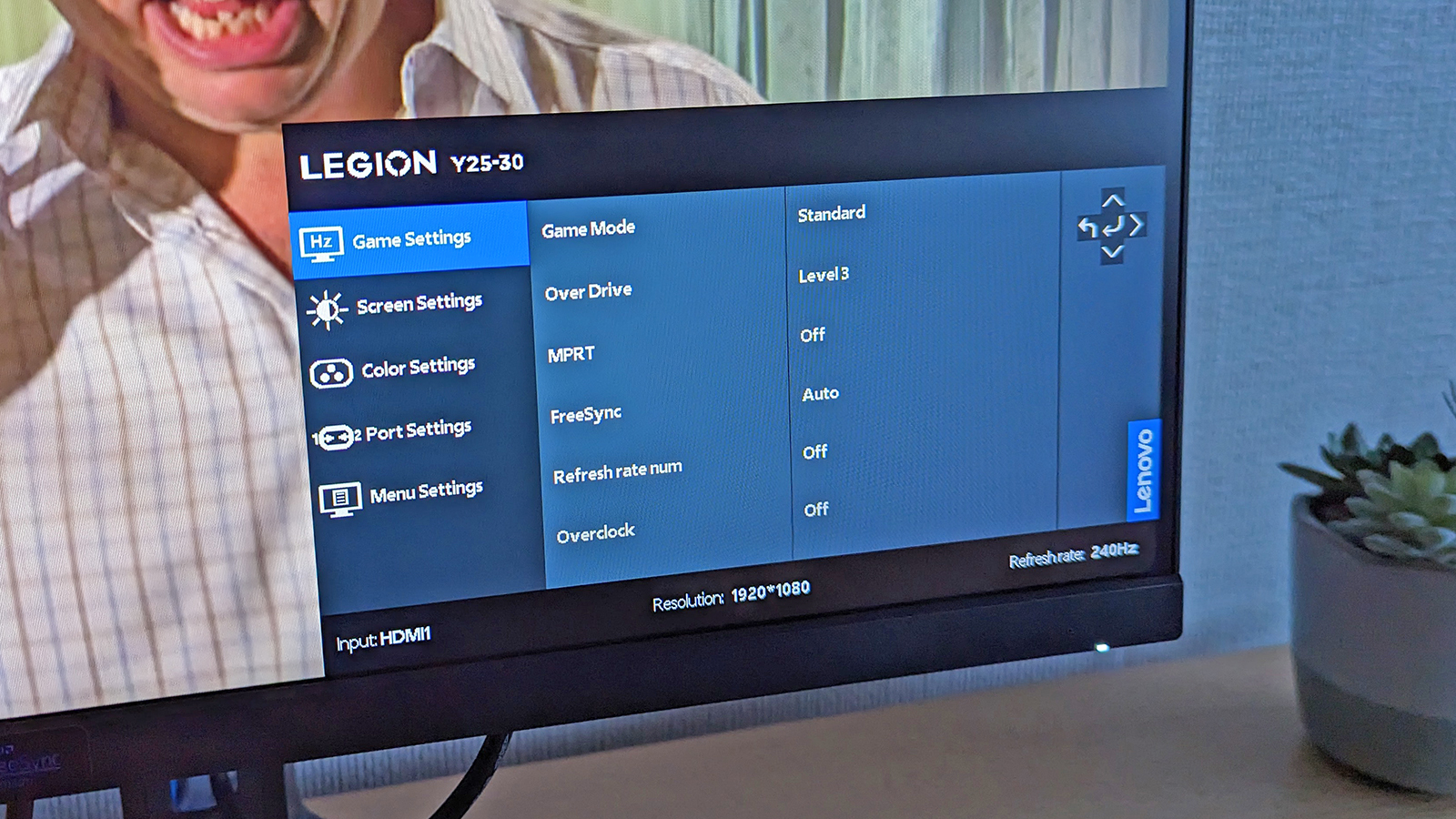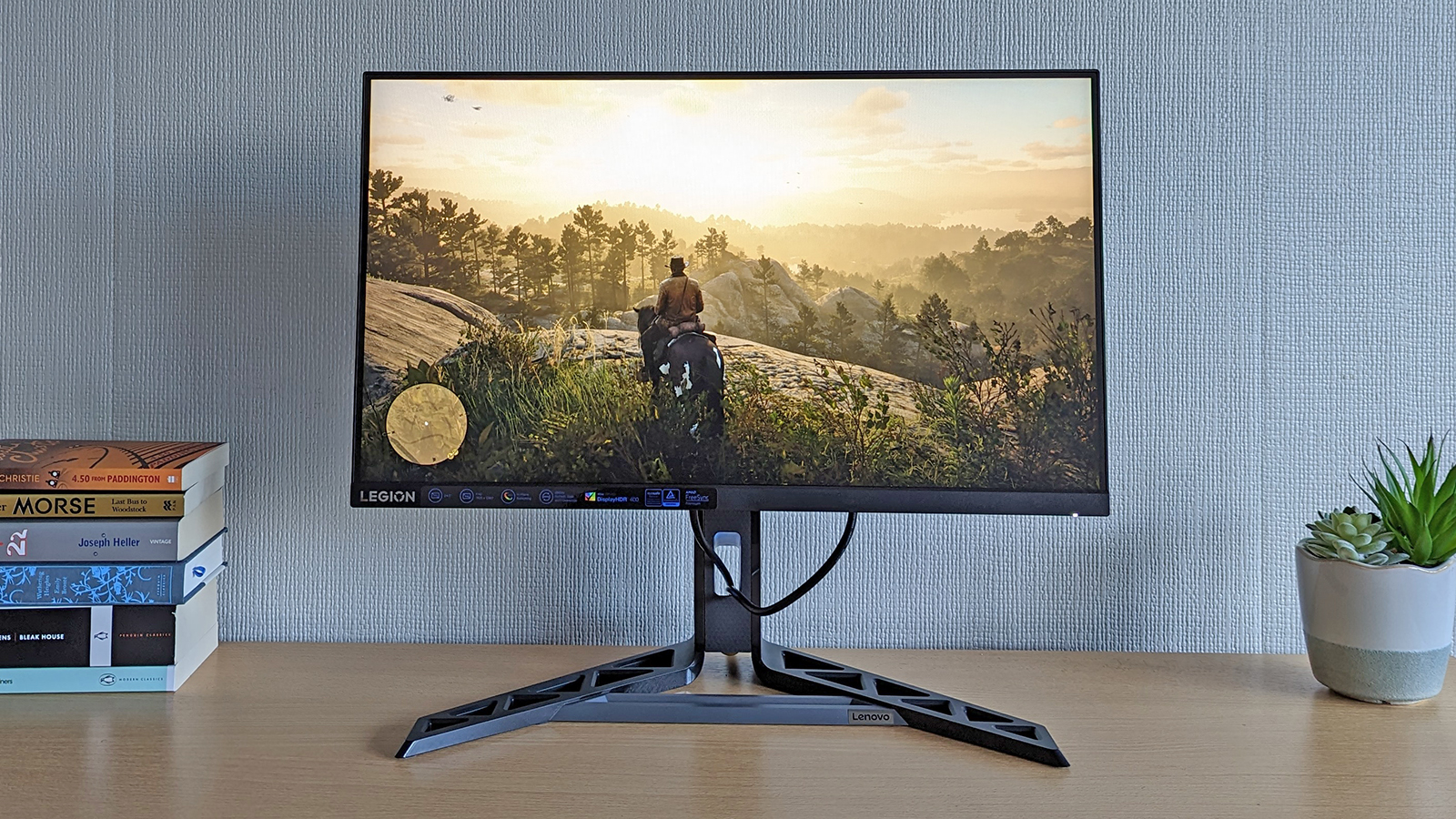Lenovo Legion Y25-30 review: an affordable monitor for gaming and productivity
The Lenovo Legion Y25-30 offers plenty of features and won't break the bank


With the Lenovo Legion Y25-30, we're looking at an impressive, no-nonsense monitor that can turn its hand to gaming, creative projects or indeed anything else – just make sure you're going to be comfortable with the size, resolution and design before buying it.
-
+
Excellent, clear picture
-
+
Lots of positioning options
-
+
Appealing price point
-
-
Not the biggest
-
-
Limited to a 1080p resolution
-
-
Occasional tweaking required
Why you can trust T3

The Lenovo Legion Y25-30 has enough about it to be put forward for a spot on our best gaming monitors list, with refresh rate and response time specifications that are difficult to beat on the market at the moment – especially considering the affordable price point of this monitor.
Our detailed Lenovo Legion Y25-30 review will tell you everything you need to know about this 24.5-inch monitor: not just what you can expect in terms of gaming performance, but also how it stands up for entertainment and productivity purposes too.
Given the Full HD/1080p resolution of this monitor it isn't going to trouble our best 4K monitors guide, and its size means it's not a contender for one of the best ultrawide monitors either – but it certainly has its own appeal and its own strengths that make it well worth considering. Here's why:
Lenovo Legion Y25-30: price & availability
The Lenovo Legion Y25-30 is out now and you can check the widgets embedded on this page for the latest pricing on the web – at the time of writing you can pick it up for around £300 in the UK and $340 in the US, but you might be able to find it for cheaper (as at the time of writing, check out the shopping widget embedded below for up-to-the-minute information). In the UK, the monitor is available from retailers including Amazon and Argos.
Lenovo Legion Y25-30 review: design & setup

The design of the Lenovo Legion Y25-30 is a bit of a mix: the main monitor is quite austere and simple, basically a big black rectangle with another rectangular box protruding from the back of it to house the ports and other tech. Then you have the stand and the frame, which are a bit more jazzy and eye-catching in terms of their aesthetic. Overall, though, it's not a flashy monitor, with nothing in the way of RGB lighting or vibrant colours (there is a single LED light on the front that lets you know when the monitor is on).
When it comes to the setup, it couldn't be much easier, and we're pleased to report that you don't need a screwdriver or any other tool to put this together. The stand slots into the back of the monitor, then the base is attached to the stand with a thumbscrew. Considering the relatively small size of the unit – certainly compared to some other gaming monitors we've tested – you can easily and quickly complete the job of assembling the Y25-30 without any help, and it's not difficult to carry around either.
If you're measuring out the space on your desk, when built the monitor measures 557 x 494 x 257mm and weighs in at 5.3kg. There's an impressive amount of flexibility here in terms of positioning too: you can change the height of the screen on the stand, you can swivel and tilt it, and you can rotate it up to 90 degrees if you'd rather use the display in portrait mode instead of landscape. That's a lot of flexibility, and it's VESA mount compatible as well.
Get all the latest news, reviews, deals and buying guides on gorgeous tech, home and active products from the T3 experts
Port choice is pretty good too, with two HDMI 2.0 ports and one DisplayPort 1.4 port to pick from, as well as four USB 3.2 Gen 1 Type-A ports that you can use as a hub – enough capacity to connect up plenty of devices. The stand has a simple cable management system built into it so everything can be kept reasonably tidy, and overall we'd say Lenovo has done a decent job with the design and build.
Lenovo Legion Y25-30 review: features & picture quality

This is a 24.5-inch IPS LCD monitor running at a resolution of 1920 x 1080 pixels, so it's not for those who are after a massive gaming screen or an abundance of pixels, i.e. beyond Full HD.
It offers a typical brightness of 400 nits, a contrast ratio of 1000:1, Display HDR 400 support, a response time of 1ms, and a top-tier refresh rate of 240Hz (or 280Hz when overclocked). Creative professionals will want to know that 99 per cent of the sRGB colour gamut and 120 per cent of the sRGB colour area ratio are covered too.
It's that refresh rate that really stands out of course, while other specs – like the 1080p resolution – aren't quite at the highest level that they could be. It's clearly a monitor with a specific set of people in mind, those who want something more compact and subtle without compromising on too many of the features. Not to mention the budget factor, of course. There's support for AMD FreeSync Premium here as well, which is going to further tempt gamers.
We're pleased to report that the monitor is mostly fantastic in terms of its performance. Colours are well-balanced and clear, there's no hint of motion blurring, and everything from games to movies really pops. The screen does look a little washed out occasionally but we're only talking about a very minor issue – one that can easily be rectified using the wealth of tweaks available via the on-screen display (controlled with buttons behind the screen).
There are two 3W stereo speakers integrated into the monitor, which is always something that we like to see on these devices, and there's a 3.5mm headphone jack as well to give you another audio option. The speakers aren't brilliant, mind, but they're perfectly decent at this price point, and it's something we like to see in our monitors as it saves you investing in a separate speaker set (or relying on your laptop speakers).
Lenovo Legion Y25-30 review: verdict

We really like the Legion Y25-30 it in almost every respect. It's very flexible in terms of positioning, it offers plenty of ports, the design is solid, and the screen looks great for games, productivity, or entertainment.
The 240Hz refresh rate is the stand-out spec here, but the others aren't bad either. We doubt that anyone who purchases this, for its very reasonable price, is going to be disappointed with what they get.
That said, picking the right monitor for you depends on a lot of factors: how much space you've got, how capable your computer is, what you're planning to use the display for, and so on. That means the Lenovo Legion Y25-30 is going to offer a lot of appeal for a certain group of people and not so much for others – particularly those who need a high-resolution for tasks like video editing.
The 1080p/Full HD resolution of this Legion monitor will be seen as a limitation by some prospective buyers. There are also much bigger monitors out there too – okay, they're also a lot more expensive, which is where the Y25-30 finds its balance. It's a great monitor for the price.
Also consider
When we say there are bigger and bolder gaming monitors out there, we're talking about models like the LG UltraGear 34GN850. It really packs a punch with its curved, 34-inch 4K panel, although of course there is a price to pay – the LG model is going to cost you about twice as much as the Lenovo monitor.
The Dell S2721HGF is somewhere between the Lenovo and the LG in terms of size, and it's curved as well. Gamers will want to know about the 1ms response time and the 144Hz refresh rate – not quite up to the standard of the Legion Y25-30, but you can potentially pick it up for less money. It's 27-inches too, so a little larger, which may further add to the appeal.
Dave has over 20 years' experience in the tech journalism industry, covering hardware and software across mobile, computing, smart home, home entertainment, wearables, gaming and the web – you can find his writing online, in print, and even in the occasional scientific paper, across major tech titles like T3, TechRadar, Gizmodo and Wired. Outside of work, he enjoys long walks in the countryside, skiing down mountains, watching football matches (as long as his team is winning) and keeping up with the latest movies.
